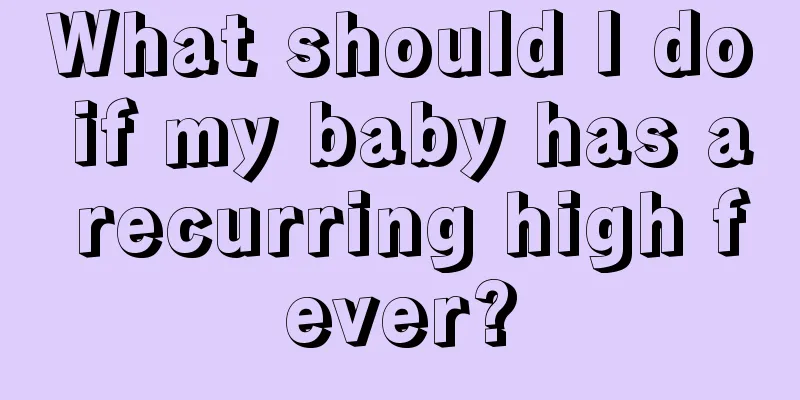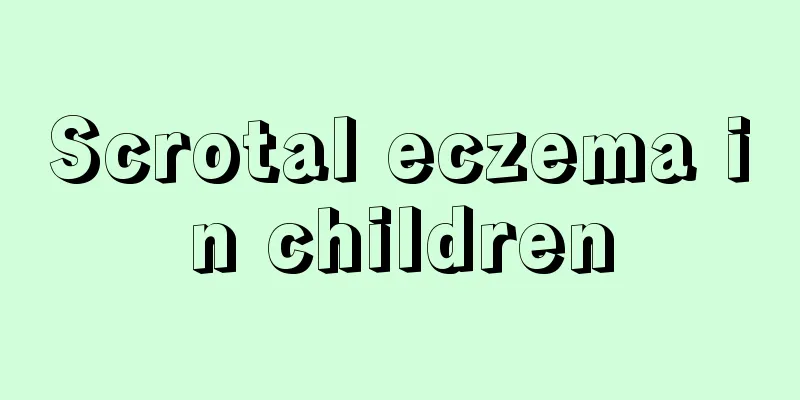What should I do if my baby has a recurring high fever?

|
The answer to the question that many mothers are eager to know is why their baby has a recurring fever. There are many reasons for a baby's fever, the most common of which is probably caused by the baby's respiratory tract or gastrointestinal infection. When this happens, you should take your baby to the doctor for examination and symptomatic treatment in time. So what should you do if your baby has recurring high fever? Here are some tips for you, let’s take a look. When your child has a high fever, use the following physical fever-reducing methods to make your child feel more comfortable: 1. Reduce clothing and quilts: When your child has a fever, remember not to let him wear too many clothes or cover him with too thick quilts. This traditional method of covering your body with sweat is not conducive to dissipating heat and reducing fever. Instead, it may cause febrile convulsions due to overheating. For many babies, simply reducing the amount of clothing and bedding can reduce body temperature. 2. Drink more water: It helps to sweat and dissipate heat. In addition, water has the function of regulating temperature, which can lower body temperature and replenish the water lost by the body. 3. Cold compress: This method is simple and easy. Apply a cold towel to the forehead. After the towel becomes hot, soak it in cold water and apply it again. For older children, using cold water bags or ice bags may be more effective. 4. Wipe the whole body with warm water or take a bath: Undress the child, rub the whole body with a towel in warm water (about 37°C) or take a bath. This can dilate the blood vessels in the skin and increase heat dissipation; in addition, when water evaporates from the body surface, some heat will also be lost. 5. Warm alcohol bath: Alcohol bath: Dilute 70% alcohol with 1/1 tap water. The water temperature after dilution should be about 37℃-40℃. Put it in a small bowl. When giving a sponge bath, close the doors and windows, dip gauze or a soft towel in the alcohol in the bowl, and wipe the child's palms, soles of feet, armpits, inner sides of upper arms, and thighs, and then wipe the limbs and back. Do not wipe directly with alcohol, this method is not suitable for babies under 1 year old. Through the content introduced above, I believe that parents have already understood how to deal with babies who have repeated high fevers that do not subside. The physical methods introduced above can effectively help the baby lower his body temperature. Parents may wish to use them as a reference. If the baby's fever still does not go down after physical cooling, it is recommended to take the baby to see a doctor in time. |
<<: Reasons why baby has a persistent high fever
>>: How to take care of your baby if he has a cold, stuffy nose and fever
Recommend
How to supplement zinc if baby has poor appetite?
My baby is already over 3 years old. Recently, ma...
Children with 10 characteristics have high IQ
Core Tip: Brain experts always believe that intel...
Parents should learn to judge the symptoms of worms in children’s stomachs!
If personal hygiene is not taken care of, childre...
What is the reason for a child's long-term hoarseness?
The problem of hoarseness in children is a big pr...
What is the normal value of jaundice in children?
For children, there is generally one thing that n...
Why do newborn babies have yellow eyes?
The eyes are the windows to the soul, and childre...
What to do if your child has a headache and vomits
Every family has only one child, so the child is ...
What causes children's front teeth to turn outward?
The pursuit of beauty is believed to be the goal ...
What should children eat to recover faster after surgery?
Children's bodies are not as strong as adults...
Causes of continuous nosebleeds in children
Children's physical development is not comple...
Fetal umbilical cord blood flow test results
Everyone knows that nowadays pregnant women have ...
What to do if baby suddenly refuses to breastfeed?
Babies have to rely on their mothers from the mom...
How to deal with burns in children
Burns are very common in life, and burns are also...
Children grinding their teeth while sleeping
Many people grind their teeth, which affects the ...
What to do if a 9-year-old girl has breast development
We all know that girls develop earlier than boys....









